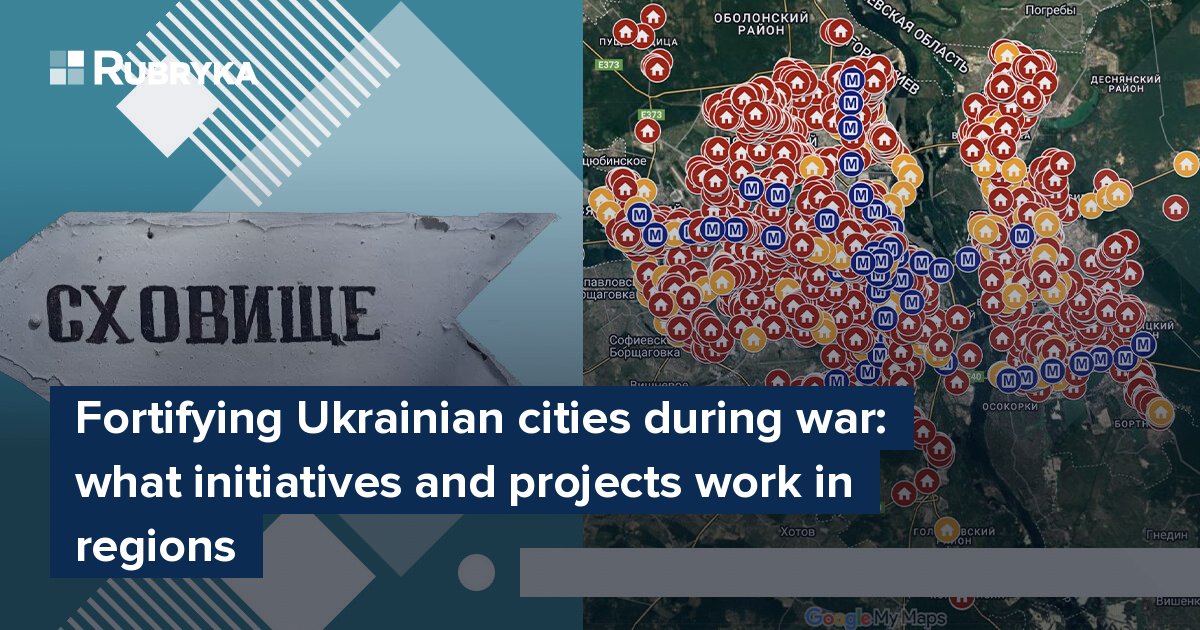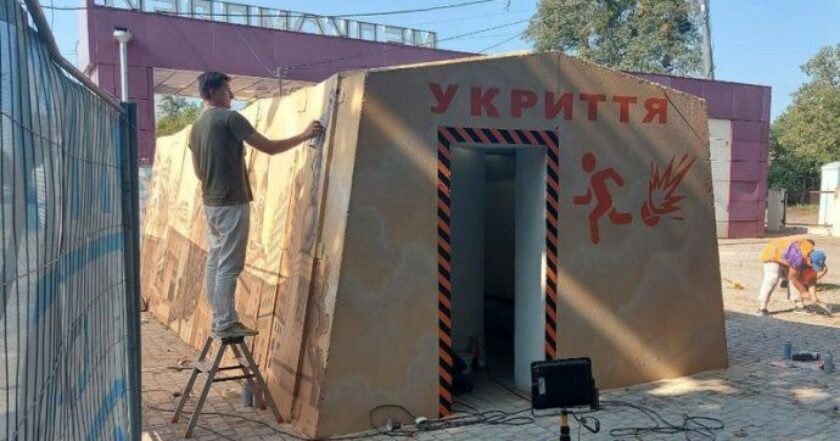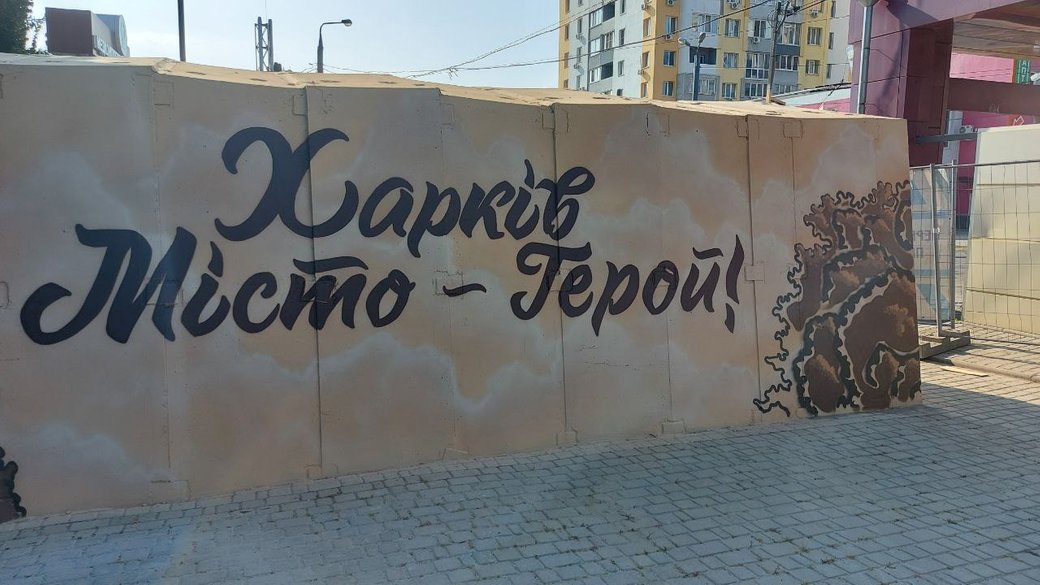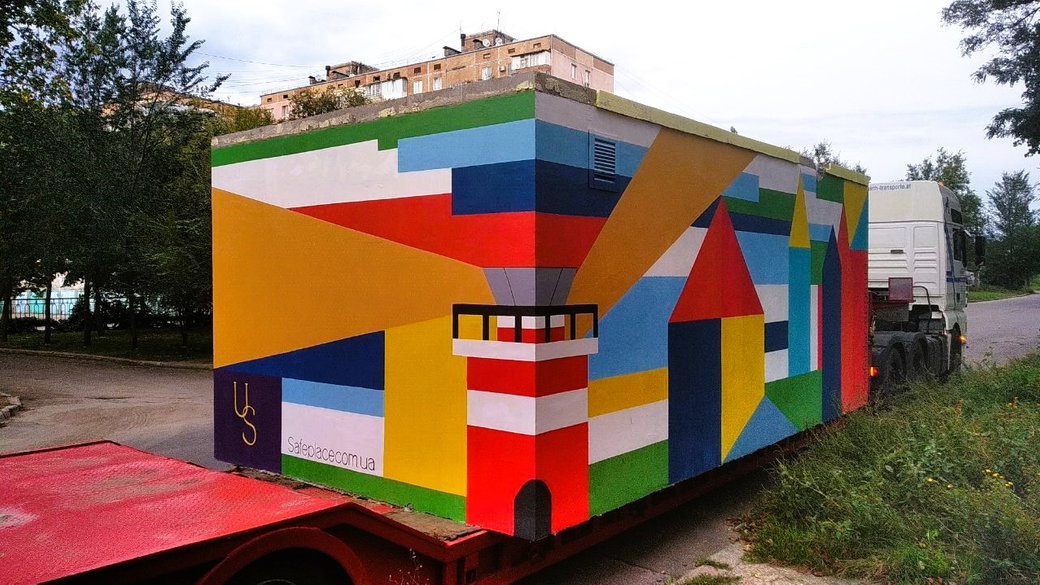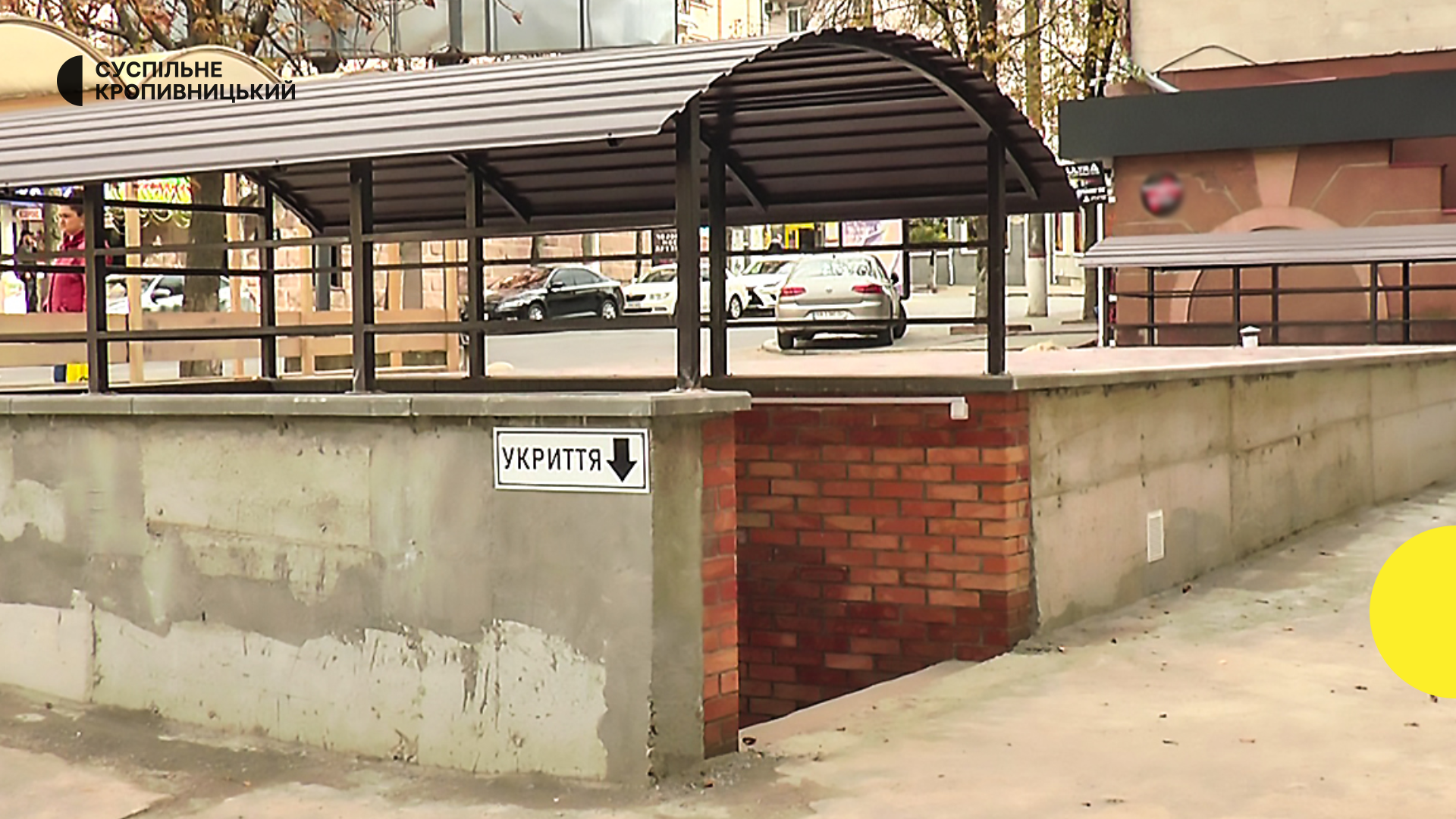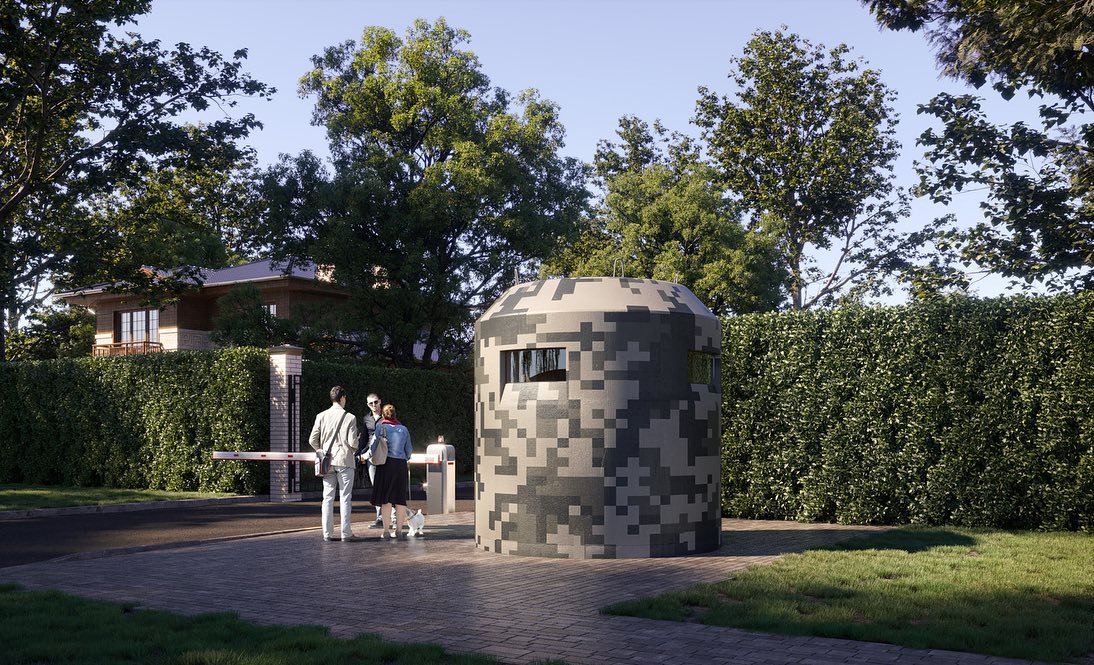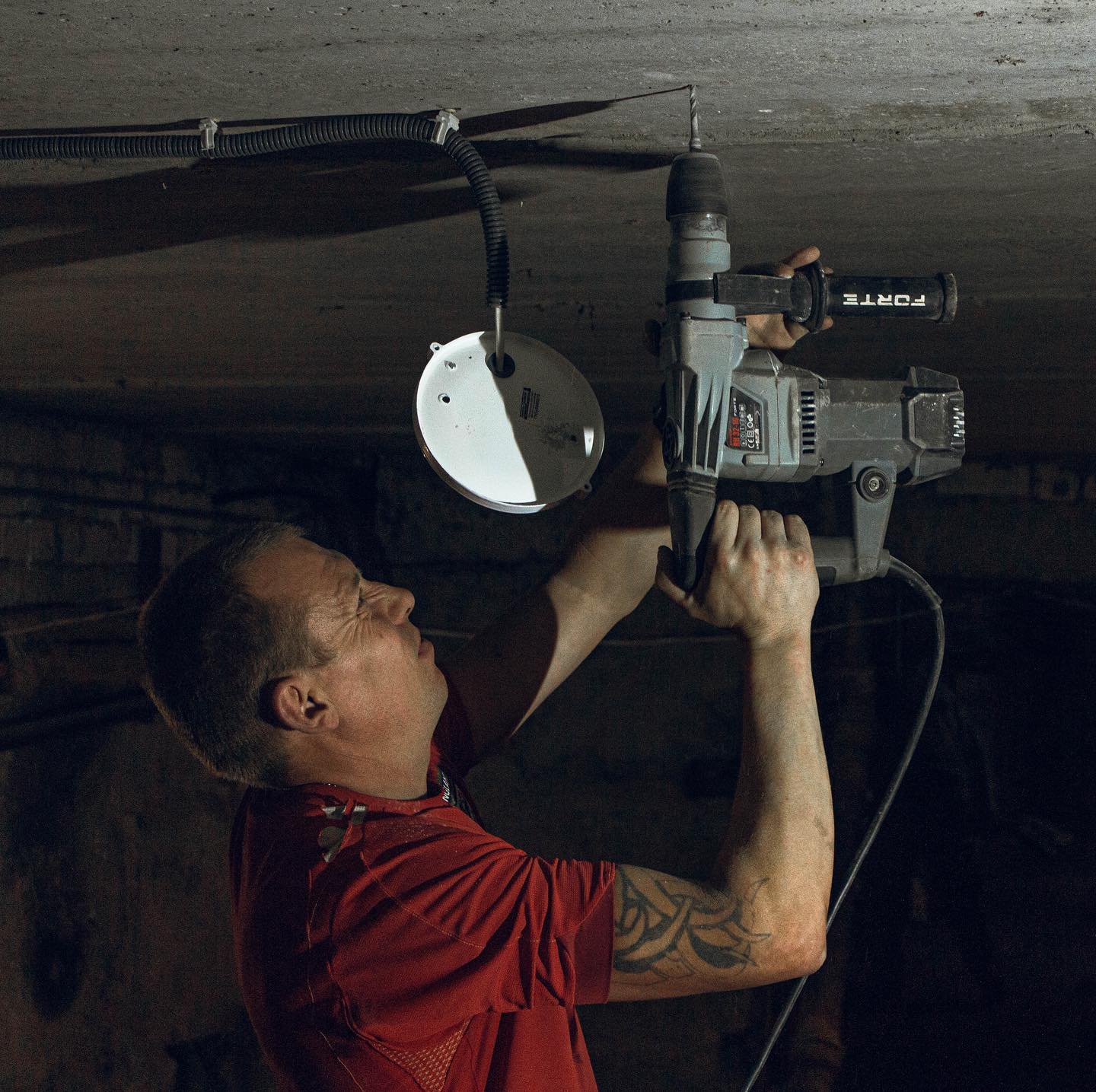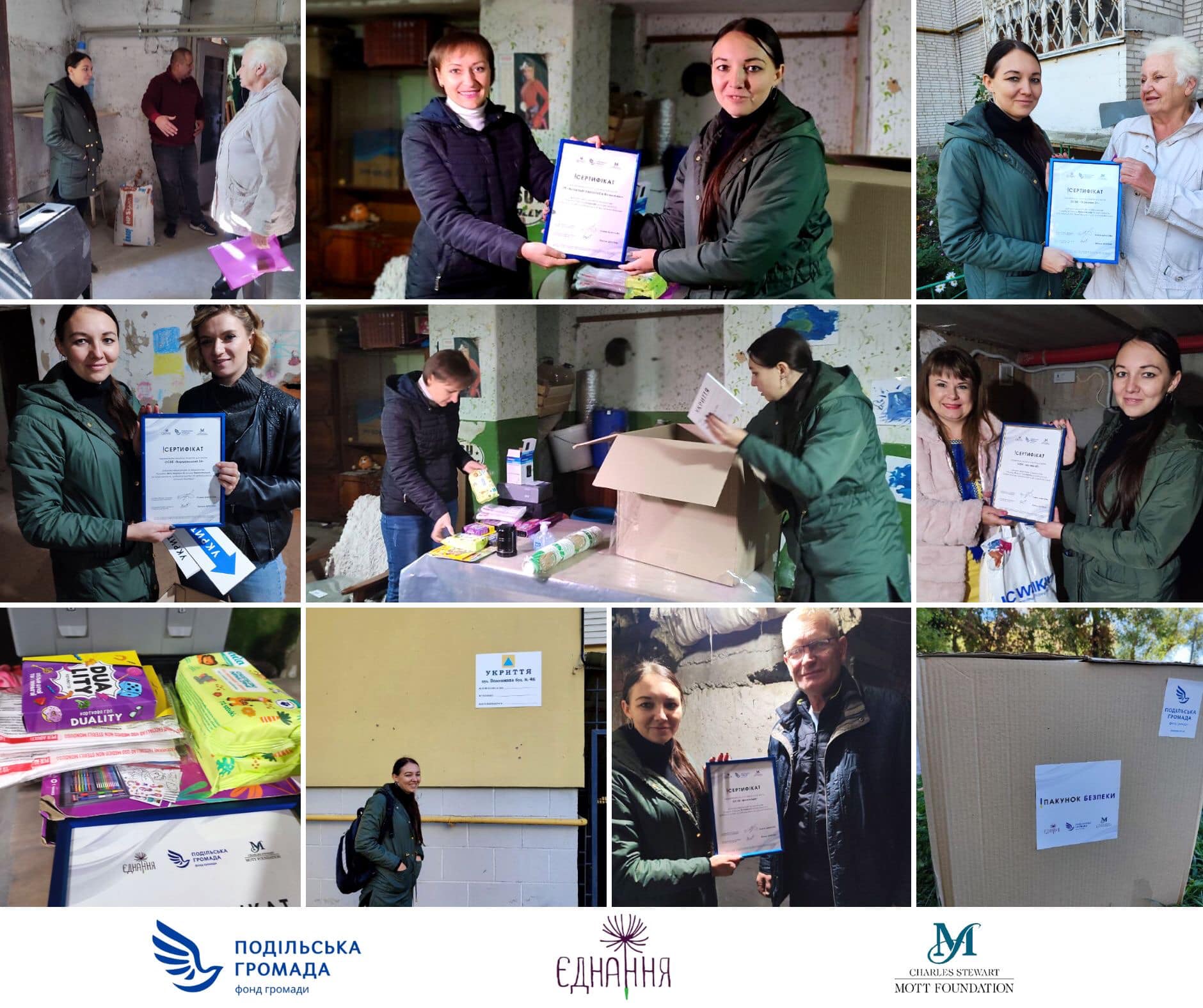
A full-scale war forces Ukrainians to look for new ways to protect themselves from the enemy's actions. Shelters of various kinds are being set up in cities, and volunteer initiatives are being launched to strengthen our defense capabilities and protect people. We gathered all these projects in one place.
STREET BOMB SHELTERS
Street structures where people can hide during air raid sirens and explosions have been set up in several cities in Ukraine. Their task is to protect people from bombing debris.
The first shelter
The first shelters of this kind appeared in Kharkiv in mid-August. A bomb shelter room for 12 places was installed on the street, with inside surveillance cameras. The peculiarity of shelters is that they're decorated with murals.
Along with the module, there is also 100 kg of sand for extinguishing fires. According to Kharkiv Mayor Ihor Terekhov, safe stops were to be installed in 25 locations in Kharkiv. These are the busiest routes of trolleybuses, buses, and trams.
Until November 21, Kharkiv plans to install seven more such structures. In general, according to the Government Courier website, the city authorities have determined the first 25 locations where these structures will be installed first: the busiest routes of trolleybuses, buses, and trams.
SafePlaceUA
In September, a reinforced concrete shelter was installed at a public transport stop in Mykolaiv. On July 29, a russian missile killed eight people there.
The SafePlace 0001 shelter weighs 70 tons and can accommodate 24 people at the same time. The structure cost 400 thousand hryvnias and was presented to Mykolaiv by Odesa businessman and philanthropist Anatolii Redera.
The project's creators are the Youth 2.0 charity foundation and the Urban.inst urban planners and architects association. Structures with thick walls and a ceiling made of reinforced concrete in the shape of a box are to be placed in public recreation areas near playgrounds, parks, squares, and bus stops.
According to Ilia Blokhin, the Youth 2.0 chief and the SafePlaceUA project manager, the organization studied the experience of Israel to develop the shelters.
"Our attention was drawn to the ground shelters closest to the Gaza Strip, which are most exposed to shelling. They stand there literally every 50–100 meters: at bus stops, in public areas, and next to children's and sports grounds. A person has 5–7 seconds to run to such a shelter. Their task is to protect people's lives and health from flying shrapnel and striking objects, shock waves, and small arms," says Ilia Blokhin.
Currently, SafePlaceUA is engaged in the production of even more such structures. They are also created for Mykolaiv, and the most prominent Ukrainian companies finance them.
"They see this project as their social responsibility to Ukrainians. Therefore, our humanitarian project should primarily interest socially responsible businesses. We also want to involve patrons from abroad in the project," says Ilia Blokhin.
Kropyvnytskyi and Chuhuiv's experience
In Kropyvnytskyi, the first shelter stop appeared in early October, Hromadske Radio reports. It differs from the previously described shelters in that it is a semi-basement room with special reinforced concrete structures. Inside there are benches for sitting, light, and ventilation. About 20 people can hide there.
In the summer, on streets in Chuhuiv, Kharkiv region, the authorities began to place structures consisting of foundation blocks and sandbags. They also should cover people from debris flying from explosions.
The Hobbit House from Lviv
The project under such a fantasy name is operating in Lviv. These are protective shelters made of concrete and reinforcement, covered with grass. Planted in the ground, they look like hobbit houses from Tolkien's Lord of the Rings universe.
The project team says the concrete from which the modules are made is used in military construction to build objects resistant to any impact, like bunkers, including those with protection against nuclear weapons.
Options for planning modules are different: depending on the number of blocks, up to 146 people can take shelter.
Dnipro DOTs
The Dnipro residents create DOTs—shelters weighing up to 12 tons and 2.5 meters high. Up to 3 people can stay inside. The concrete module protects against small arms, grenade launchers, projectile fragments, etc.
Such structures can strengthen military lines and checkpoints during the defense of bridges, administrative and infrastructure buildings, and as a temporary shelter for the civilian population in crowded places, such as transport stops.
Dnipro bought twenty such DOTs.
PREPARATION OF SHELTERS
Kharkiv Relive
At the end of the summer, the Relive project started working in Kharkiv. Its volunteers are rebuilding the city's basements into temporary bomb shelters.
What do they do? They remove the garbage, prime the walls, install electricity, place sleeping pallets, and install ventilation, sinks, and toilets. As of October 13, a team of about 30 volunteers has already equipped 105 basements that can accommodate 6,720 people.
"As in any new field, the first difficulties are always related to the construction. How should it be? What should be the standards? How should the process be built? Who should do what exactly? We also faced these issues. After the processes are on track, the only difficulty is money, which is always needed on an ongoing basis for projects of this scale," says the founder of the project, Maks Burtsev.
The project team's goal is to prepare enough basements to shelter 100,000 people. "We need money specifically for reconstruction. Our goal is primarily to create a safe space, not a comfortable room. But after directly rebuilding the basements, we need pallets for sleeping places, heaters, or pot belly stoves," says Maks Burtsev.
Vinnytsia experience
In Vinnytsia, residents of co-ops could receive 10,000 hryvnias for organizing their shelters (in case they co-finance, i.e., at least 2,000 hryvnias).
The Podilska Hromada Community Fund initiated the Shelter for Life project. In total, they could receive assistance for 40 protective premises in high-rise buildings. They also handed over boxes with blankets, lanterns, napkins, and other first aid items to the winners who completed the arrangement of the basements.
"We understood that these were small funds, but the main idea was to awaken in residents the desire to arrange a safe place in their building, to give an impetus to continue the work," the project organizers wrote on the Facebook page.
Finding shelter
The application DeUkhryttia is working in Ternopil. The app shows you the nearest shelter and how to get there. The application contains information about the type of shelter, the institution where it is located, the address, the mode of operation, the availability of a toilet, or the Internet.
Similar maps are available in many Ukrainian cities. Here is, for example, Kyiv's one. And in Lviv, the nearest shelter can be found by geolocation or name in Viber and Telegram in the city chatbot City Helper Bot.
This article was created by the Rubryka online publication within the Ukraine Rapid Response Fund program, implemented by IREX with the support of the US State Department. The content is the sole responsibility of the Rubryka online publication and does not necessarily reflect the views of IREX or the US State Department.


